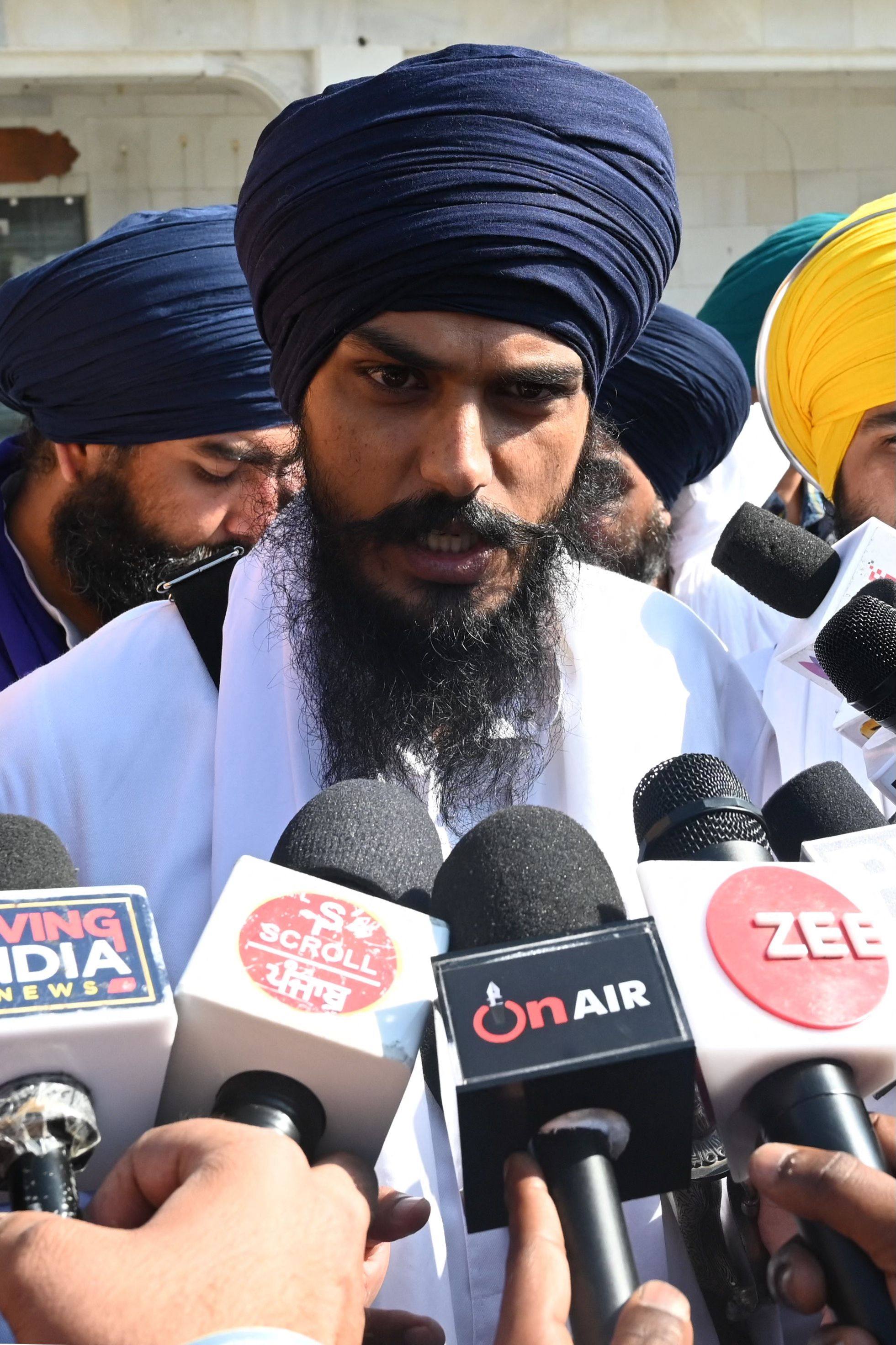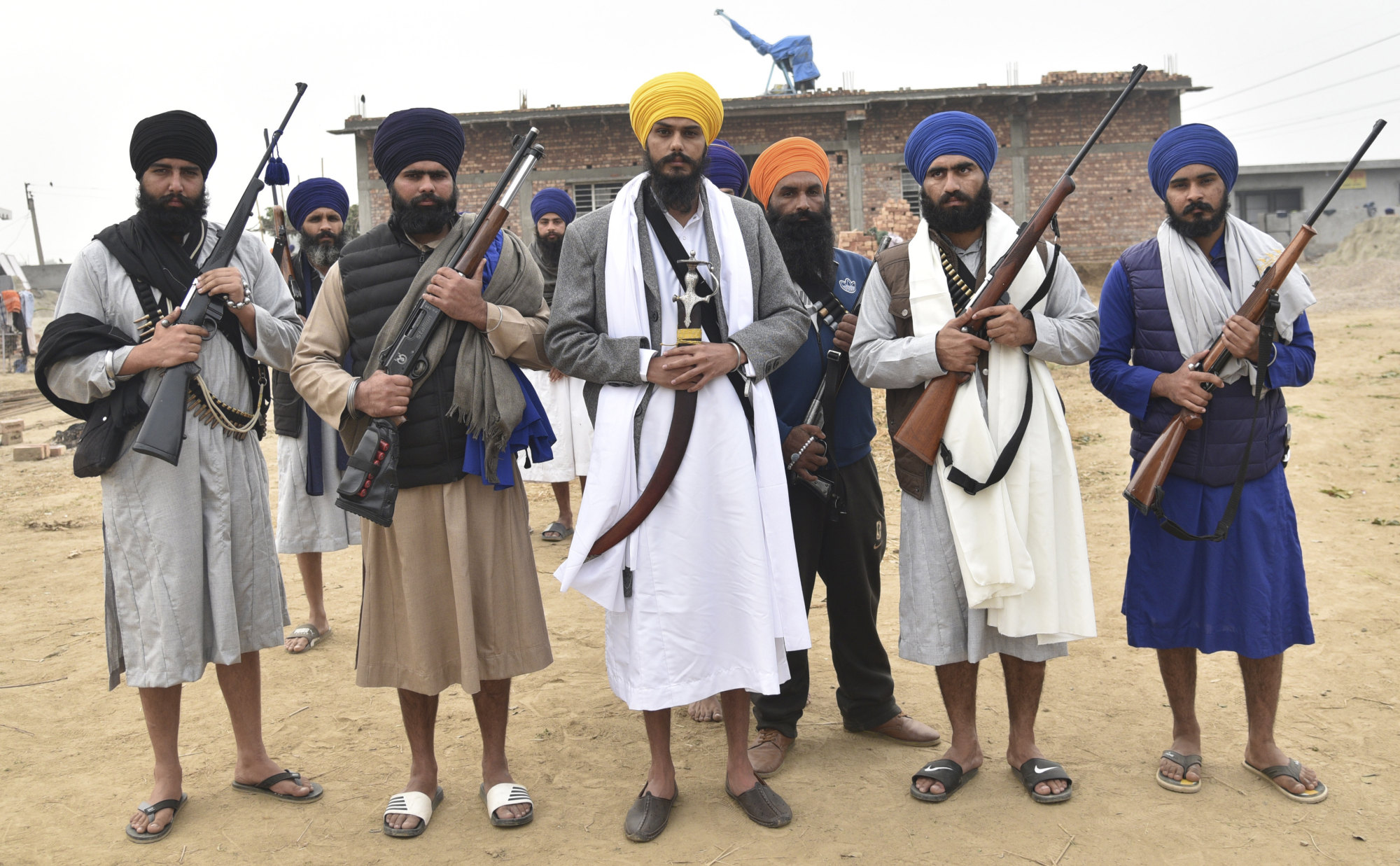
Indian police arrest Sikh separatist leader Amritpal Singh after month-long hunt
- Amritpal Singh had been on the run for a month after capturing national attention in February, when supporters stormed a police station in Punjab state
- The separatist leader, found in a village temple, had revived calls for an independent Sikh homeland and the secession of India’s northern Punjab state
Indian police arrested a firebrand Sikh separatist on Sunday after a month-long manhunt that sparked protests and vandalism among the diaspora in Britain, Canada and the United States.
Amritpal Singh rose to fame in the northern state of Punjab calling for a separate Sikh homeland known as Khalistan, the struggle for which sparked deadly violence in India in the 1980s and 1990s.
Police said they arrested Singh at around 6:45am, having surrounded a village following intelligence that he was there in a Sikh temple.
“Once he got the message that he had no escape route and he was surrounded, he was arrested,” said senior police official Sukhchain Singh Gill.
Singh, 30, styles himself on Jarnail Singh Bhindranwale, a figurehead of the Khalistan movement killed when the Indian army stormed the Golden Temple in Amritsar, a major Sikh site, in 1984.
He sports a similarly styled blue turban and reportedly travelled to the former Soviet republic of Georgia last year for cosmetic surgery to look more like his hero.
Singh and his supporters, armed with swords, knives and guns, raided a police station in February after one of the preacher’s aides was arrested for assault and attempted kidnapping.

Authorities then tried to arrest Singh in mid-March, but he dramatically escaped, reportedly on a motorbike after changing clothes at a gurdwara (temple).
Deploying thousands of officers in the manhunt, authorities cut off mobile internet for days in Sikh-majority Punjab, home to 30 million people, in their search.
They arrested more than 100 of his followers, transferring them to jails hundreds of miles away, and banned gatherings of more than four people in some areas.
After reported sightings in New Delhi and elsewhere, Singh released a video in late March in which he taunted the authorities and called the police operation an “attack on the Sikh community”.
“I was neither afraid of arrest earlier, nor am I now. I am in high spirits. Nobody could harm me. It is the grace of God,” he said.

The operation sparked protests by Sikhs outside Indian consulates in Britain, Canada and the United States.
Demonstrators smashed windows in San Francisco, took down an Indian flag at the Indian High Commission in London and reportedly vandalised a Gandhi statue in Ontario.
India summoned top US, British and Canadian diplomats to complain and press for improved security at Indian missions in their countries.
Singh’s video was posted on Twitter accounts based in Britain and Canada, which the social media company took down in India following government requests, reports said.
Twitter also blocked for Indian users the accounts of several prominent Sikh Canadians who criticised the crackdown, including MP Jagmeet Singh, as well as several journalists, according to the reports.
Punjab, which is about 58 per cent Sikh and 39 per cent Hindu, was rocked by a violent separatist movement for Khalistan in the 1980s and early 1990s in which thousands of people died.
The botched 1984 raid in Amritsar, known as Operation Blue Star, led to the assassination of India’s prime minister Indira Gandhi by her Sikh security guards a few months later.
That in turn sparked a massive anti-Sikh pogrom in New Delhi and elsewhere lasting several days that left thousands more people, including children, shot, beaten and burned to death.
Critics accused India’s then-ruling Congress of turning a blind eye to the killings with some figures from the party alleged to have played an active role in the violence.
The separatist movement later lost support, with its most vocal advocates today primarily among the Punjabi diaspora despite Indian calls on foreign governments to rein them in.
“Some people made an attempt to hit the peace and brotherhood in Punjab at the behest of enemies of the country,” Punjab chief minister Bhagwant Mann said in a video address on Sunday.
“I want Punjabi youth to have top degrees and win medals at national and international events and not go astray at the hands of a few selfish, antinational elements.”
Singh also leads Waris Punjab De, or Punjab’s Heirs, an organisation that was part of a massive campaign to mobilise farmers against controversial agriculture reforms being pushed by Prime Minister Narendra Modi’s government.
The legislation triggered a year of protests that began in 2020, as farmers – most of them Sikhs from Punjab state – camped on the outskirts of New Delhi through a harsh winter and devastating coronavirus surge. The protests ended after Modi’s government withdrew the legislation in November 2021.
Additional reporting by Associated Press

.png?itok=arIb17P0)